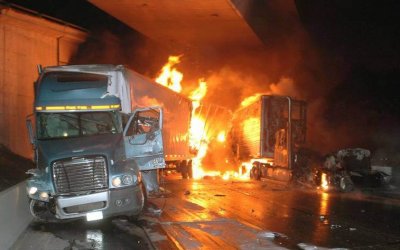CAIT project no.: CAIT-UTC-REG16
Fiscal Year: 2018/2019
Status: Final
Principal investigator(s): Negar Elhami-Khorasani, PI; Anthony F. Tessari, Co-PI
Performing organization(s): University at Buffalo-SUNY
Coauthor(s):
Managing organization: Rutgers CAIT
In cooperation with: Arora and Associates, P.C.
Partner project manager: Harry Capers, Vice President
In cooperation with: Pennsylvania Department of Transportation
Partner project manager: Louis Rizzi, District Bridge Engineer
Supported by: USDOT OST-R
Major tunnel fires can lead to catastrophic events potentially resulting in the loss of lives, property damage, long service disruptions, and major socioeconomic impacts. A number of previous historical events confirm that tunnel fires may not necessarily cause collapse, but significant damage to the tunnel lining and long-term disruption to traffic/rail services can lead to major economic losses.
The evaluation procedure under such extreme loading scenarios (rapid rise of temperature in excess of 1000° C) involves many uncertainties, such as the intensity and duration of fire, and the responses of the tunnel structure, liner, and surrounding soil under fire. The majority of existing work focuses on passenger safety, smoke control, and evacuation paths. Meanwhile, there are no code provisions or established procedures for damage quantification and risk assessment of tunnel fires in the United States.



